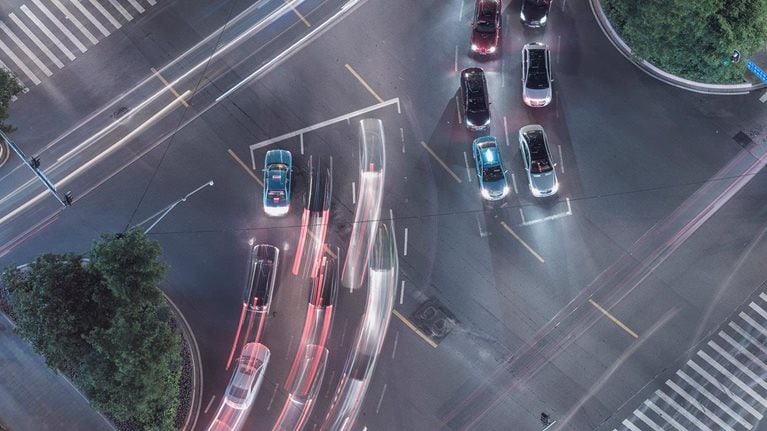Without a concerted push by the public sector, the unconstrained introduction of AVs could lead to a private ownership and private ridership model for AVs, increasing congestion, reducing transit demand, and worsening quality of life. To reap the benefits that AVs have to offer, governments must refocus investment to promote shared mobility and ensure that investment complements and encourages private investment.
Leveraging private investments will be particularly critical given that gas, parking, licensing, and fine revenue are decreasing as electrification, shared mobility, and other trends take root. This has the potential to reduce state and local transportation budgets by $80 billion per year in the US by 2040. To meet new and existing capital needs, governments can prioritize key packages of investments, beginning with digital improvements and other on-road investments, to promote shared autonomy. This will position them to capture the nearly $850 billion available in public safety and other benefits projected to come from AV adoption in the U.S.
On September 18th, 2019, McKinsey’s Global Infrastructure Initiative (GII) hosted a roundtable discussion with public sector leaders, urban planners, transport researchers, technology providers, and investors to explore the latest research as well as tangible steps required to prepare for AVs. Participants engaged in frank discussions about infrastructure, financing, and implementation. The following insights emerged:
- Support AV development through good infrastructure maintenance. The first wave of AVs—self-contained units that do not require human interaction in most circumstances (L4)—is already far down the development path. Governments can support this current phase of innovation by maintaining a state of good repair on public networks and ensuring roads and signage are in good enough condition to help AVs interact easily with the built environment.
- Public transit should take a leadership role in AV adoption. Centralized operations of public transit systems, with a legacy of driverless trains, are natural early adopters of AVs that will make public transit more efficient and usable. A feedback loop could emerge as visible AV public transit helps normalize the technology, while micro-transit AVs could help solve “last-mile” challenges and provide affordable access throughout a city.
- Partner early with municipalities on business models and pilots. Municipalities across the country are eager to work with innovative companies as they seek to self-differentiate and attract economic growth. But the belated engagement by the private sector could create problems down the road. One roundtable participant mentioned that many private-sector models of AV economics do not include likely municipal tariffs and surcharges. To get a complete picture, all the stakeholders (transportation departments, local governments, OEMs, utility companies) need to bring their expectations to the table early.
- Government can act now to advance second generation AVs. If the public sector wants to realize a future where AVs are more integrated with public infrastructure and other mobility services, it needs to act now to create enabling conditions, including establishing standards for vehicle-to-infrastructure communication. Private sector players are holding back funds for fear of investing in the wrong technology. By setting standards for sensors, telecommunications protocols, and general interoperability, governments will provide investors with the confidence needed to move faster and place bets.
- Remain outcomes-focused when creating new revenue models. Municipal revenues are projected to decline dramatically, while the need for investment rises. Fees on cars (fuel surcharge, registration, property tax) and fines (parking and speeding tickets) will reduce and increased fleet ownership will shift tax burdens away from individuals and toward companies with more paths to tax reduction. As municipalities explore models for replacement revenue, like congestion charging, tolling, fare taxes, and drop-off fees, they should ensure revenue preservation is balanced with incentives that drive desired outcomes.
- Look to land value capture for replacement revenue. Municipalities can also leverage their valuable property by charging curb fees and transforming parking facilities into service centers as parking demand drops. An AV’s revenue will be determined by its uptime, so operators will prefer decentralized facilities that allow for greater hours in service. Parking garages converted to droneports or shared mobility hubs may also be a future source of municipal revenue.
- Maximize revenue during commute hours. Although daily commutes constitute a minority of vehicle trips, these trips are high-demand, high-value, and present little ability to time-shift. This group will also be the most likely to want to be early adopters of AV technology and may have a willingness to pay associated service fees.
- Open data sets to solve complexity. Many different operators and technology firms are amassing enormous data sets—some overlapping and some distinct. However, everyone is grappling with where their own data sets are incomplete. Sharing data into a data ocean will enable collective problem-solving.
